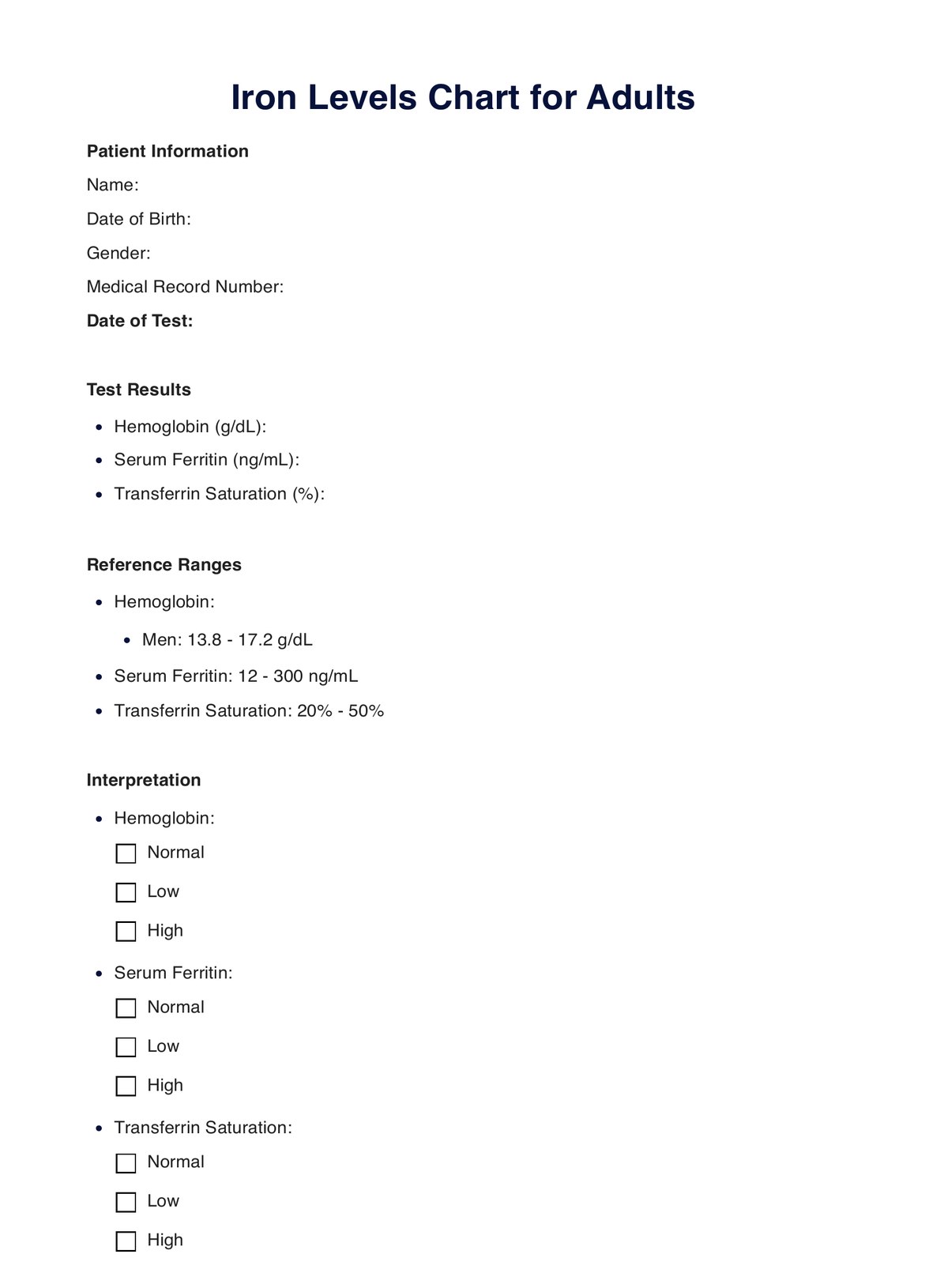Healthcare providers, physicians, hematologists, and individuals concerned about their iron levels often request an Iron Levels Chart for Adults.

Download an Iron Levels Chart for adults - a comprehensive tool for tracking and interpreting iron-related test results. Ensure optimal iron health.
Healthcare providers, physicians, hematologists, and individuals concerned about their iron levels often request an Iron Levels Chart for Adults.
It's used during routine check-ups, to diagnose anemia, monitor chronic illnesses, assess fatigue, manage iron disorders, and in pre-operative assessments.
The chart helps interpret iron-related blood test results, track changes over time, and guide healthcare decisions based on established reference ranges.
EHR and practice management software
*No credit card required
Free
$0/usd
Unlimited clients
Telehealth
1GB of storage
Client portal text
Automated billing and online payments